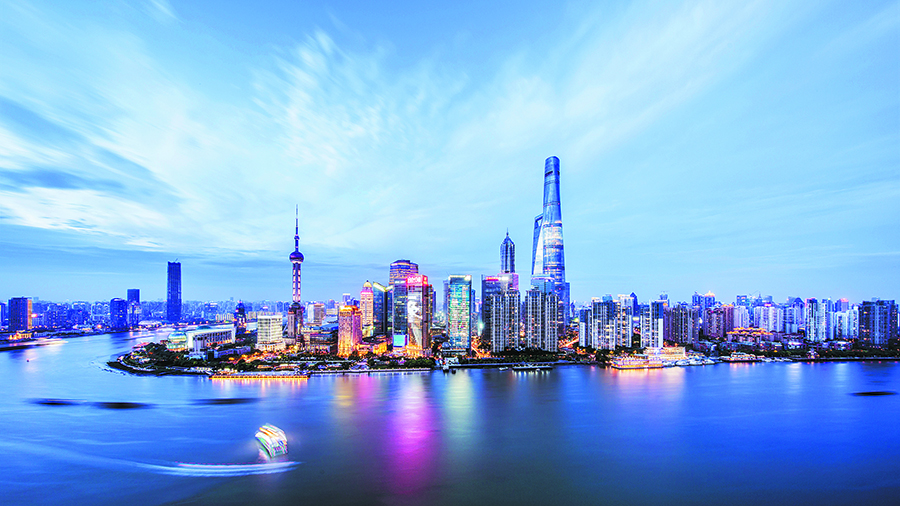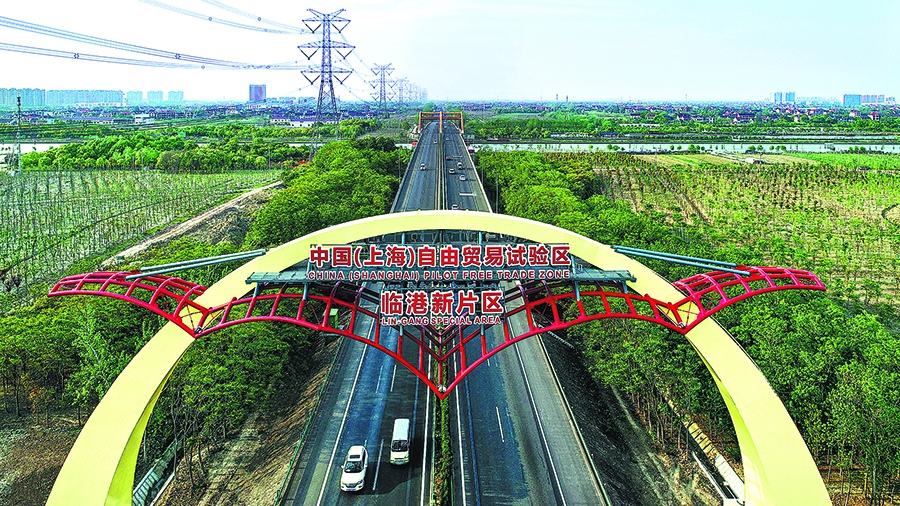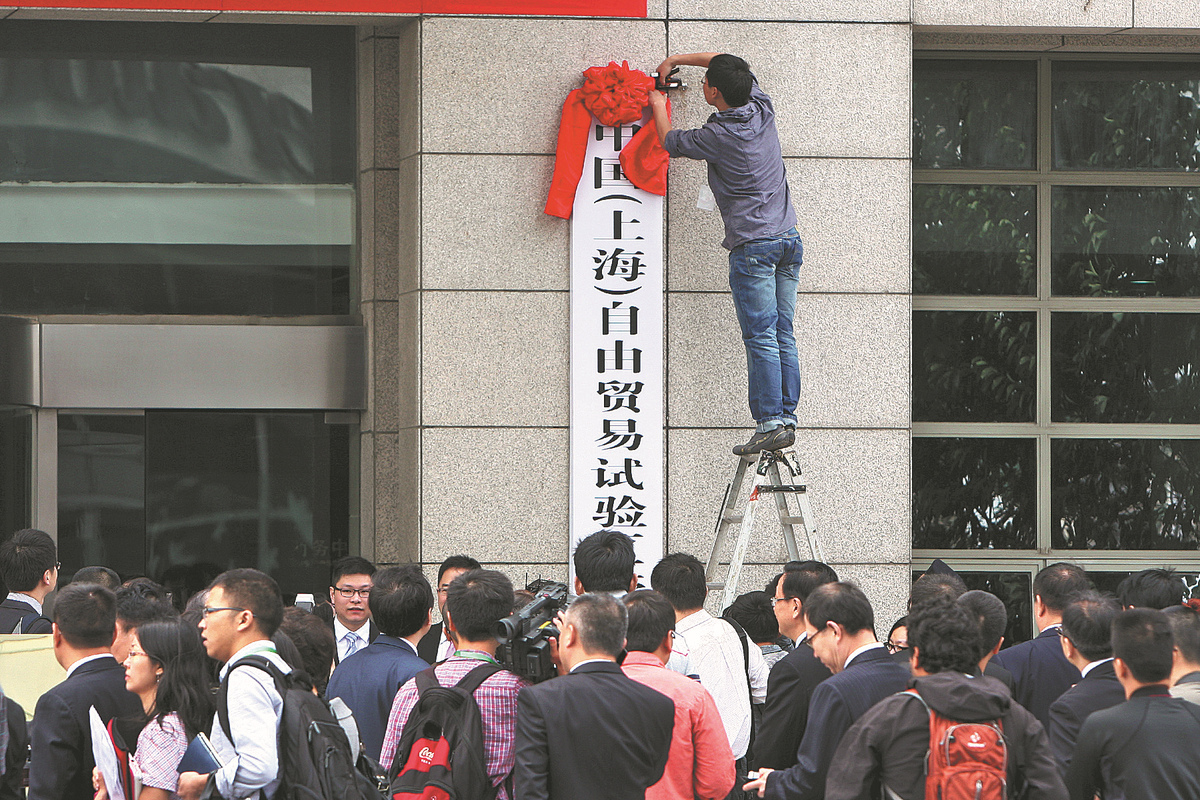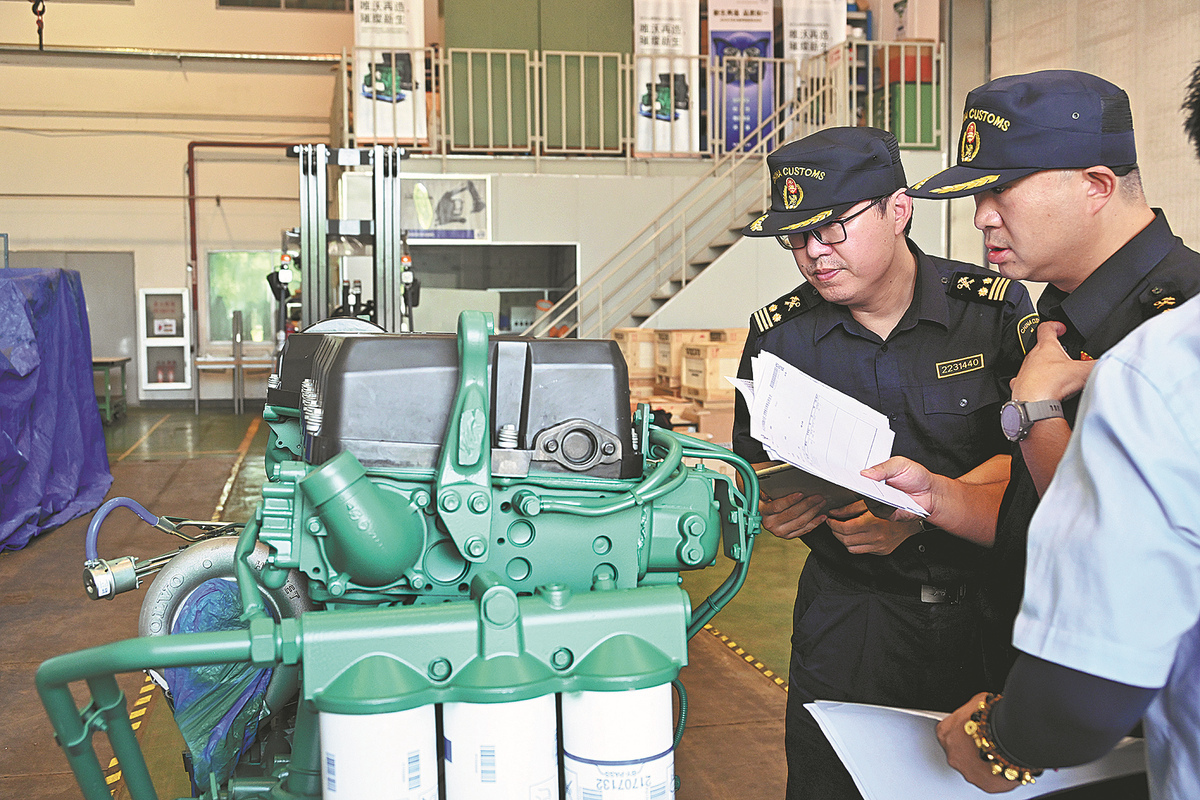A springboard for growth


A look at how the Shanghai FTZ has over the past decade been a crucial engine driving innovation and economic development in China, Shi Jing reports.
A remanufactured engine for an articulated truck imported by Volvo Construction Equipment (China) arrived in Pudong New Area of Shanghai and completed declaration procedures at customs on Sept 1.
This marked the first time a remanufactured engine was imported into China.
This feat was made possible by a State Council measure released in late June, which stipulated that pilot programs for importing remanufactured products will be carried out in the FTZs or free ports.
Prior to the release of the new policy, used road equipment and engines were defined as old mechanical and electrical equipment and were banned from being imported into China.
The imported engine was remanufactured by Volvo CE's factory in Sweden. Compared to a new product of the same kind, the engine represents cost savings of 50 percent and uses 60 percent less energy. The amount of materials used and emissions are also 70 and 80 percent lesser respectively.
Remanufacturing is the process in which a previously sold, leased, used or worn product is turned into a newly produced one with a quality that is equivalent to or better than the previous version.

Pioneering innovations
Such pilot innovations have been crucial to the development of the China (Shanghai) Pilot Free Trade Zone, which was launched 10 years ago to drive institutional innovation and the country's opening-up efforts.
Another 19 free trade zones and one free trade port have been set up in China since the establishment of the Shanghai FTZ, and they have together created 302 institutional measures that have been adopted across China. Nearly half of these measures, or 145 of them, were first experimented at the Shanghai FTZ.
The negative list mechanism for foreign investment first implemented in the Shanghai FTZ is one of the most significant institutional breakthroughs made over the last decade. While 190 sectors were included in the first version of the negative list in 2013, the number has dwindled to a mere 27 in the latest version.

Among those that have benefited from the shortening of the negative list is Anchor Center for R&D and Certification (Shanghai). In 2014, the restriction on foreign-invested certification companies for imports and exports was removed, and this allowed the company to complete its registration in the Jinqiao area of Pudong in less than two weeks, said the company's executive president Si Rong.
Foreign companies have applauded the Shanghai FTZ's commitment to openness, which is one of the main factors why 14,285 foreign-invested projects with a combined registered capital of about $186.3 billion have been introduced to the Shanghai FTZ over the past decade.
Xia Mingchen, co-head of Asia Investment for Hamilton Lane, said that the establishment of the company's Shanghai office in the Shanghai FTZ in mid-February was aimed at growing the company footprint in China by making full use of the institutional innovation advantages of the Shanghai FTZ.
The institutional innovations made in the Shanghai FTZ have also been critical to driving technological innovation, especially in the pharmaceutical industry.
One such innovation is the Marketing Authorization Holders system for drugs.

In May 2016, the Shanghai FTZ started a pilot program for the drug MAH system, which has helped companies to reduce costs and shorten their production cycles.
One company that has benefited from this is Hua Medicine. According to its chairman Chen Li, the MAH system had accelerated the launch of one of its new drugs by two years and saved the company hundreds of millions of yuan in production line costs.
Chen explained that under the MAH system, drugs used in phase III clinical trials do not need to be administered by Hua Medicine. Moreover, drug production can be undertaken by other companies instead.
The MAH mechanism was later promoted nationwide upon its inclusion in the country's amended Drug Administration Law, which took effect in 2019.
Thanks to this system, the launch of 11 new Class I drugs was expedited in China. The procurement of special items in the field of cell and gene therapy was also facilitated, said officials from the Shanghai FTZ administration.
A key development driver
According to Sun Yuanxin, a professor from Shanghai University of Finance and Economics, the Shanghai FTZ has the strongest economic capacity among all Chinese FTZs. As such, it serves an important role in leading China's economic development.
Sun noted that the industrial clusters comprising companies from emerging sectors like integrated circuit, new energy vehicles, aviation, biomedicine, artificial intelligence and high-end equipment in the Lingang Special Area, which became a part of the Shanghai FTZ in 2019, have been developing quickly over the last decade.
Echoing this point is Xie Yiqing, associate researcher from the Institute of China Studies at the Shanghai Academy of Social Sciences. Xie said the Shanghai FTZ should also further strengthen its ties with neighboring regions so that it can better serve the integrated development of the Yangtze River Delta region, which was elevated as a national strategy in 2018.
"There should be deepened cooperation in terms of digitalization, green transition and smart development between the Shanghai FTZ and the rest of the Yangtze River Delta region. In this way, more successful experiences and business models can be created and promoted to other Chinese FTZs," she said.
According to the Organization for Economic Cooperation and Development, China has been among the most active when it comes to relaxing foreign shareholding restrictions in industries like financial services, manufacturing, agriculture and pharmaceuticals over the last decade, and the FTZs have played a key role in this.
"Having contributed approximately 1 percentage point to global growth per year for the past decade, China will undoubtedly remain a key driver of the economic recovery moving forward. China's FTZs can be effective catalysts for more vibrant global trade and ultimately for stronger development and growth in China and beyond," said Mathias Cormann, OECD's secretary-general.
Zhang Lei, a researcher from the Institute of International Business at Shanghai University of International Business and Economics, noted that the Shanghai FTZ should carry out more reforms and opening-up measures to expand the domestic market and tap into more global resources to help China move up the international value chain.
Zhou Qisheng, deputy director of the research office of Pudong New Area Party Committee, said the development path of the Shanghai FTZ will be rather different from a decade ago given the fact that the world is now facing challenges such as an economic slowdown and geopolitical tensions.
"Achieving stronger development will be key to realizing China's socialist modernization. There should be more growth engines nurtured, and the Shanghai FTZ should shoulder such a responsibility," Zhou said.
"Institutional innovation is a tool that will closely serve China's opening-up," he added.
Figures and facts
NUMBERS:
・ Of all the 302 institutional innovative measures experimented in the 21 FTZs in China and promoted across the rest of the country, 145 were first rolled out in the Shanghai FTZ
・ As of the end of 2022, the Shanghai FTZ had attracted $58.6 billion in foreign investment over the past decade. This figure accounted for about 30 percent of the city's total during the same period
・ More than 14,000 foreign-invested projects have been registered in the Shanghai FTZ over the last 10 years
・ The Shanghai FTZ accounted for 30 percent of the combined import and export values of China's 21 FTZs in 2022
・ The Free Trade Account system has handled 142 trillion yuan ($19.54 trillion) in cross-border payments and settlements denominated in renminbi and foreign currencies as of 2022
・ Approval time for business licenses shortened by nearly 90 percent
・ More than 500 frontier industry projects with a combined investment of more than 560 billion yuan have been set up in the Lingang Special Area
MANY FIRSTS
・ China's first negative list for foreign investment: 2013
・ China's first wholly foreign-owned hospital: the Shanghai Towako Hospital in 2016
・ China's first wholly foreign-owned carmaker: Tesla in Lingang in 2018
・ China's first wholly foreign-owned securities firm: JP Morgan in August 2021
・ China's first international relay shipment made by a foreign company: 2022
・ China's first yuan-denominated trade for imported LNG: March 2023
・ China's first remanufacturing business: September 2023
SOURCES: CHINA (SHANGHAI) PILOT FREE TRADE ZONE ADMINISTRATION, SHANGHAI GOVERNMENT NEWS OFFICE


